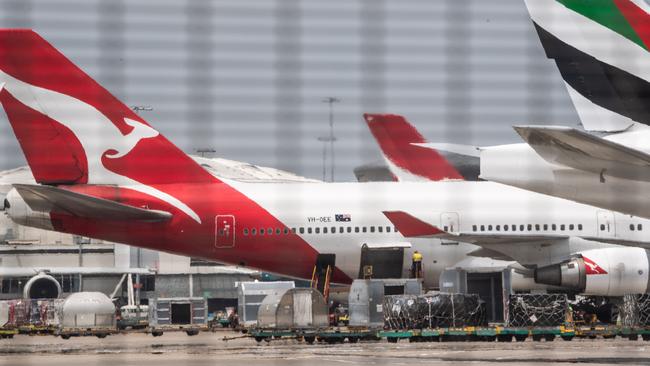Qantas says planes safer than public transport for coronavirus
Qantas boss Alan Joyce says passengers less likely to get infected in an aircraft cabin than other public spaces.

Qantas boss Alan Joyce says people are less at risk of being infected with a virus on an aircraft than on other forms of public transport, as more than 150 Australians are carried home from China.
The Qantas Boeing 747 registered VH-OEE took off from Sydney on Sunday afternoon, flying first to Hong Kong to pick up the volunteer crew and then on to Wuhan, the city worst hit by the coronavirus.
Speaking on Channel 9, Mr Joyce said the air inside an aircraft was actually replaced every five minutes with medical grade filters used to remove 99 per cent of particles, including viruses.
READ MORE: China pumps markets as Wall Street wakes up | First victim dies outside China | Medics move in to treat evacuees
“An A380 has 20 of (the filters) on board … so it’s a lot safer than public transport, a lot safer than restaurants, a lot safer than being in the office,” Mr Joyce said.
In addition, passengers would wear protective masks and change them regularly, while crew wore masks and gloves and had minimal contact with passengers.
After landing back in Australia, at Learmonth Airport in Western Australia, the 747 would undergo a deep clean before it resumed normal commercial operations.
“It will be cleaned for three days; a very deep cleaning to ensure we’ve taken all risks out of future operations,” Mr Joyce said.
He also reaffirmed Qantas’ intention to continue operating flights to and from Beijing and Shanghai until Sunday February 9, to help bring home Australians who wanted to leave China.
“The medical advice is that it’s still safe to operate,” said Mr Joyce.
“The problem now is rostering these services,” he said in reference to the travel restrictions imposed by Singapore and the US.
The response to the flights had been strong with the services “quite full”.
“I think (coronavirus) is going to be a big impact on the tourism industry,” said Mr Joyce.
“For us, it’s a relatively small part of our international operation … but I do think there’s going to be a big impact on the economy and everyone has to support tourism as a consequence.”
In the past year, close to 1.5 million Chinese visitors spent more than $12bn in Australia, or $33m a day.
Chinese carriers are continuing to operate some services to Australia but these are being reviewed daily based on demand.




To join the conversation, please log in. Don't have an account? Register
Join the conversation, you are commenting as Logout